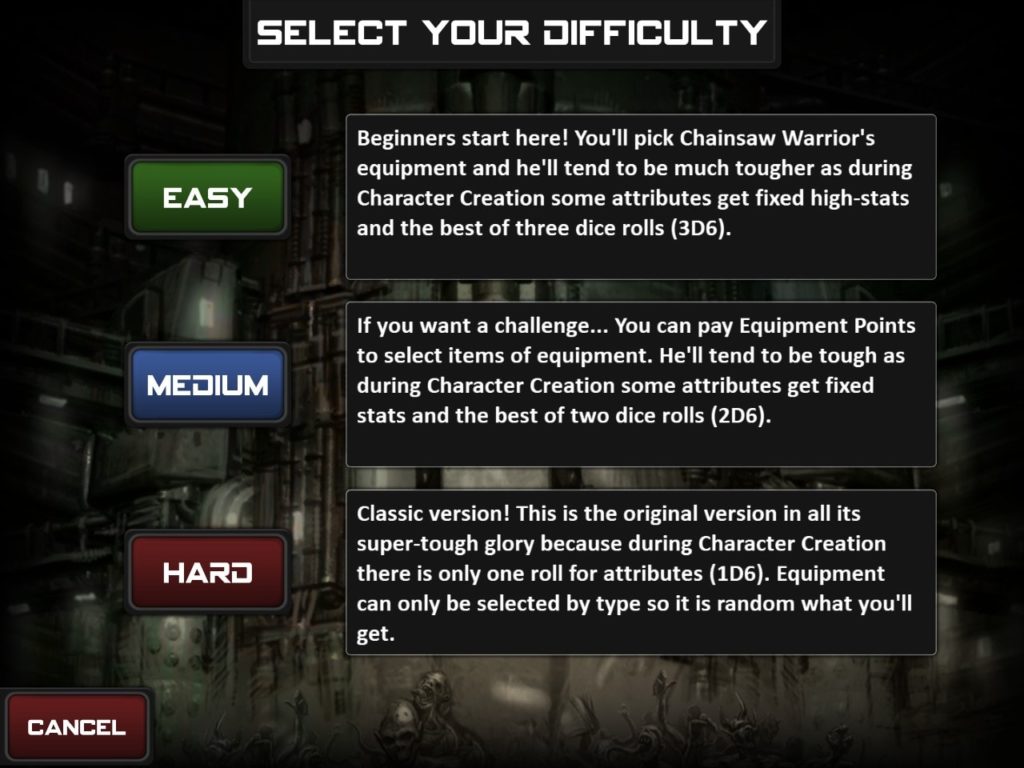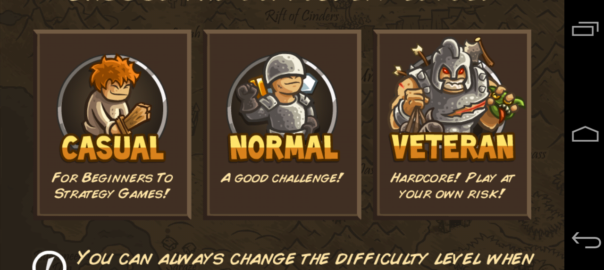How does one convey difficulty levels?
The most common method in video games is through a menu from which players choose terms to set the difficulty of the game. Such menus generally take the form of the following:
- Easier than Easy
- Easy
- Medium
- Hard
- Harder than Hard
With each term developers have two ‘paths’ they can take. A generic or idiosyncratic term.
- Generic – Commonly used terms which have no thematic basis in a game
- Idiosyncratic – Terms that have a thematic basis in a game
Generic
The following are examples of generic terms:
- Beginner
- Easy
- Medium / Normal
- Hard
- Expert
A clear advantage to using such terms is they are established concepts in the gamer zeitgeist making them more likely to be know across cultures, and languages.
On the other hand a number of issues arise when using generic terms such as:
- Different Meanings – Nintendo Hard’s easy is harder than Western easy
- Different Connotations – There are many interpretations of the term. For example Easy can have negative connotations to a players self sense of skill though it may be appropriate. This may cause them to choose a higher difficulty than is appropriate resulting in a less enjoyable experience.
- Not Thematic – Alone they add little flavor to the game
Idiosyncratic
The following is an example of idiosyncratic terms used in Civilization 4 Colonization:
- Discover
- Explorer
- Conquistador
- Governor
- Viceroy
The major advantage of idiosyncratic terms is they add flavor to the game, though interpreting these terms can be a troublesome task. In the case of this game, fans have themselves translated these difficulty levels into generic terms in an entire page complete with diagram and descriptions.
![]()
Considering those who speak another language, they would have little hope in being able to understand deeply thematic terms if unfamiliar with the game.
Other Measures
Whether a developer uses a generic or idiosyncratic term to convey difficulty, there are a number of additional measures they can take to help their players.
Pictorial
Visual imagery is a well known cross cultural form of communication, and games have employed it. For example the Wolfenstein series has over the years employed idiosyncratic terms with a pictorial method of progressively angrier looking faces to convey difficulty.

Complementary Text
The addition of complementary text can help clarify terms.

Positional Cues
Positional cues refers to employing a standard structure for displaying difficulty. A list form where top is easiest, and bottom is hardest. Utilizing positional standards means language is not necessary as it allows for a positional inference.
Adaptive Difficulty
Some developers do away completely with difficulty menus. Dark Souls for example crafted their difficulty in such a way where what class you choose affected the difficulty of the game.
Color
Using colors can help convey difficulty. For example using the familiar colors of traffic lights can help convey difficulty where Green is Easy and Red is Hard.

Conclusion
Whether one uses generic terms or idiosyncratic terms above all developers should strive to make their difficulties understandable. As we have seen there are various means and challenges in doing so. The key I believe is in employing a wide variety of methods to cover different weaknesses.


A nice and easy read. It makes me think about the difficulty settings Beyond two souls/heavy rain have which feels slightly insulting and is either “I don’t play video games” or “I play video games”. Which is very clear but does give the impression that there isn’t much of a challenge in the game if there are only two level’s of difficulty. Your list of several different way of stating difficulty and different levels of it seems like a useful guide for future use.
This is a really good guide for the proper use of the difficulty in games which is such an important aspect in every game. Maybe I don’t want to die every 10 seconds (Dark souls). One thing that I would suggest in future article is that instead of using different examples of the difficulties that are used , you should do critical analysis and try answering the questions like, “Why did they do it this way?”.Let me explain , when you gave the wolfenstein example, instead of just showing the example, you could have analyzed and explained the reason behind it, that the first image as a baby is a universal sign, so it becomes easier for people who don’t speak English. Another example would be the color, as in green is a universal sign for go, which is not as intense as red, that’s why it is used.